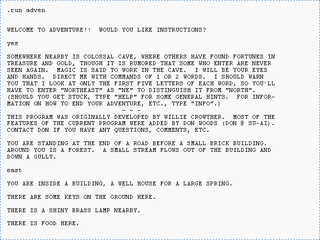 W
WColossal Cave Adventure is a text adventure game, developed between 1975 and 1977 by Will Crowther for the PDP-10 mainframe. The game was expanded upon in 1977 with help from Don Woods, and other programmers created variations on the game and ports to other systems in the following years.
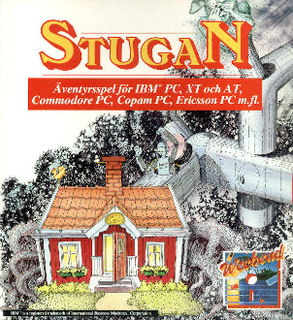 W
WThe Cottage is an adventure video game that was initially made available in 1978 for the DEC-10 mainframe computer Oden in Stockholm, and later published by Scandinavian PC Systems for IBM PCs in 1986 in Swedish, Danish, Norwegian and English. It was the first publicly available Swedish adventure game and one of the first commercial Swedish video games.
 W
WEmpire is a 1977 turn-based wargame with simple rules. The game was conceived by Walter Bright starting in 1971, based on various war movies and board games, notably Battle of Britain and Risk. The game was ported to many platforms in the 1970s and 80s. Several commercial versions were also released, often adding basic graphics to the originally text-based user interface. The basic gameplay is strongly reminiscent of several later games, notably Civilization, which was partly inspired by Empire.
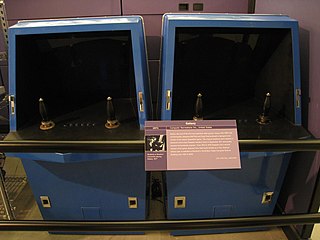 W
WGalaxy Game is a space combat arcade game developed in 1971 during the early era of video games. Galaxy Game is an expanded version of the 1962 Spacewar!, potentially the first video game to spread to multiple computer installations. It features two spaceships, "the needle" and "the wedge", engaged in a dogfight while maneuvering in the gravity well of a star. Both ships are controlled by human players.
 W
WHamurabi is a text-based strategy video game of land and resource management. It was first developed under the name King of Sumeria or The Sumer Game by Doug Dyment in 1968 at Digital Equipment Corporation as a computer game for fellow employee Richard Merrill's newly invented FOCAL programming language.
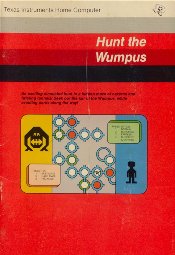 W
WHunt the Wumpus is a text-based adventure game developed by Gregory Yob in 1973. In the game, the player moves through a series of connected caves, arranged as the vertices of a dodecahedron, as they hunt a monster named the Wumpus. The turn-based game has the player trying to avoid fatal bottomless pits and "super bats" that will move them around the cave system; the goal is to fire one of their "crooked arrows" through the caves to kill the Wumpus. Yob created the game in early 1973 due to his annoyance at the multiple hide-and-seek games set in caves in a grid pattern, and multiple variations of the game were sold via mail order by Yob and the People's Computer Company. The source code to the game was published in Creative Computing in 1975 and republished in The Best of Creative Computing the following year.
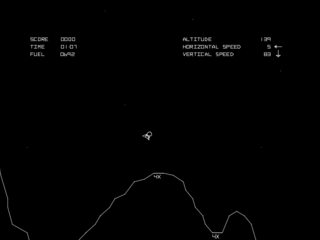 W
WLunar Lander is a genre of video games loosely based on the 1969 landing of the Apollo Lunar Module on the Moon. In Lunar Lander games, players generally control a spacecraft as it falls toward the surface of the Moon or other astronomical body, using thrusters to slow the ship's descent and control its horizontal motion to reach a safe landing area. Crashing into obstacles, hitting the surface at too high a velocity, or running out of fuel all result in failure. In some games in the genre, the ship's orientation must be adjusted as well as its horizontal and vertical velocities.
 W
WMarienbad was a 1962 Polish puzzle mainframe game created by Elwro engineer Witold Podgórski in Wrocław, Poland for its Odra 1003. It was an adaption of the logic game nim. Inspired by the discussion in the magazine Przekrój of a variant of nim in the 1961 film Last Year at Marienbad, named "Marienbad" by the magazine, Podgórski programmed the game for the in-development 1003 mainframe, released in 1963. The game had players opposing the computer in alternating rounds of removing matches from a set, with the last player to take a match the loser. As the computer always played the optimal moves, it was essentially unbeatable.
 W
WMaze, later expanded and renamed to Maze War, is a 3D networked first-person shooter maze game originally developed by Steve Colley, Greg Thompson, and Howard Palmer for the Imlac PDS-1 computer. It was largely developed between the summer of 1972 and fall of 1973, at which point it included shooter elements and soon after was playable over ARPANET between multiple universities. It is considered the earliest first-person shooter; ambiguity over its development timeline has led it to be considered, along with Spasim, to be one of the "joint ancestors" of the genre.
 W
WMulti-User Dungeon, or MUD, is the first MUD and the oldest virtual world in existence.
 W
WMUD2 is the successor of MUD1, Richard Bartle's pioneering Multi-User Dungeon. Rather than a sequel, it is the result of over 20 years of continuous development, and is still largely based on the game's original code.
 W
WMugwump is an early video game where the user is tasked with finding "Mugwumps" randomly hidden on a 10×10 grid. It is a text-based game written in BASIC.
 W
WThe Oregon Trail is a text-based strategy video game developed by Don Rawitsch, Bill Heinemann, and Paul Dillenberger in 1971 and produced by the Minnesota Educational Computing Consortium (MECC) beginning in 1975. It was developed by the three as a computer game to teach school children about the realities of 19th-century pioneer life on the Oregon Trail. In the game, the player assumes the role of a wagon leader guiding a party of settlers from Independence, Missouri, to Oregon City, Oregon via a covered wagon in 1847. Along the way the player must purchase supplies, hunt for food, and make choices on how to proceed along the trail while encountering random events such as storms and wagon breakdowns. The original versions of the game contain no graphics, as they were developed for computers that used teleprinters instead of computer monitors. A later Apple II port added a graphical shooting minigame.
 W
WRogue is a dungeon crawling video game by Michael Toy and Glenn Wichman with later contributions by Ken Arnold. Rogue was originally developed around 1980 for Unix-based mainframe systems as a freely-distributed executable. It was later included in the official Berkeley Software Distribution 4.2 operating system (4.2BSD). Commercial ports of the game for a range of personal computers were made by Toy, Wichman, and Jon Lane under the company A.I. Design and financially supported by the Epyx software publishers. Additional ports to modern systems have been made since by other parties using the game's now-open source code.
 W
WSpace Travel is an early video game developed by Ken Thompson in 1969 that simulates travel in the Solar System. The player flies their ship around a two-dimensional scale model of the Solar System with no objectives other than to attempt to land on various planets and moons. The player can move and turn the ship, and adjust the overall speed by adjusting the scale of the simulation. The ship is affected by the single strongest gravitational pull of the astronomical bodies.
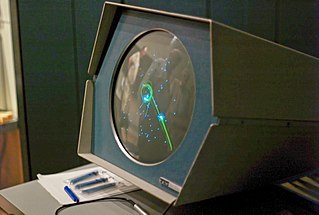 W
WSpacewar! is a space combat video game developed in 1962 by Steve Russell in collaboration with Martin Graetz, Wayne Wiitanen, Bob Saunders, Steve Piner, and others. It was written for the newly installed DEC PDP-1 minicomputer at the Massachusetts Institute of Technology. After its initial creation, Spacewar! was expanded further by other students and employees of universities in the area, including Dan Edwards and Peter Samson. It was also spread to many of the few dozen installations of the PDP-1 computer, making Spacewar! the first known video game to be played at multiple computer installations.
 W
WStar Trek is a text-based strategy video game based on the Star Trek television series and originally released in 1971. In the game, the player commands the USS Enterprise on a mission to hunt down and destroy an invading fleet of Klingon warships. The player travels through the 64 quadrants of the galaxy to attack enemy ships with phasers and photon torpedoes in turn-based battles and refuel at starbases in order to eliminate all enemies before running out of time.
 W
WThe Sumerian Game is a text-based strategy video game of land and resource management. It was developed as part of a joint research project between the Board of Cooperative Educational Services of Westchester County, New York and IBM in 1964–1966 for investigation of the use of computer-based simulations in schools. It was designed by Mabel Addis, then a fourth-grade teacher, and programmed by William McKay for the IBM 7090 time-shared mainframe computer. The first version of the game was played by a group of 30 sixth-grade students in 1964, and a revised version featuring refocused gameplay and added narrative and audiovisual elements was played by a second group of students in 1966.
 W
WTanktics: Computer Game of Armored Combat on the Eastern Front was Chris Crawford's first computer game.
 W
WTREK73 is a computer game based on the original Star Trek television series. It was created in 1973 by William K. Char, Perry Lee, and Dan Gee for the Hewlett-Packard 2000 minicomputer in HP Time-Shared BASIC. The game was played via teletype. Trek73 is so big that it needs the CHAIN feature of HP2000 BASIC.